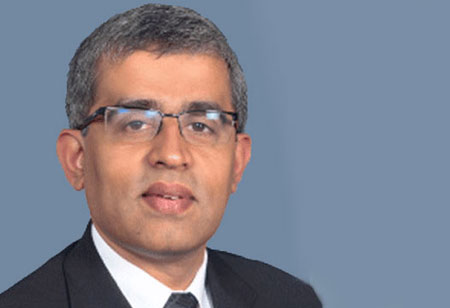THANK YOU FOR SUBSCRIBING

On-Orbit Computing for Next Generation Space Missions
Mark Broadbent, Sr. Avionics Engineer and Katie Gibas, Marketing Communications Manager, Moog Inc

 Mark Broadbent, Sr. Avionics Engineer and Katie Gibas, Marketing Communications Manager, Moog Inc
Mark Broadbent, Sr. Avionics Engineer and Katie Gibas, Marketing Communications Manager, Moog IncKatie Gibas is the Moog Space Division Marketing Communications Manager. She earned her Space Professional Certification through Nova Space in 2024 and holds an MBA from SUNY Empire. She joined the Moog team after a dozen years as a journalist, during which time she was recognized for her storytelling with an Edward R. Murrow Award and several Associated Press Awards.
Mark Broadbent has more than 25 years of experience in spacecraft avionics. He specializes in the design, development, and integration of high-performance spacecraft electronics and holds several lectures, workshops and presentations on the technology every year. Mark earned his Bachelor of Science in Electrical Engineering from Arizona State University.
In the rapidly evolving aerospace and defense landscape, the need for robust, resilient, and autonomous satellites is more critical than ever. As reliance on space-based assets grows to support everything from environmental monitoring and national security to commercial communications, processing data in real time at the source becomes imperative.
The Case for Edge Computing in Space
Edge computing, where data is processed on the satellite rather than transmitted back to Earth, has emerged as a transformative solution. This approach reduces latency, enables real-time analytics, and optimizes bandwidth usage. In high-stakes scenarios like disaster monitoring, military reconnaissance, or deep space exploration, timely insights can distinguish between mission success and failure.
Overcoming the Challenges of the Space Environment
Implementing edge computing in orbit is far from straightforward. Space is an inherently hostile environment where radiation poses a persistent threat to electronics. High-energy particles can cause both immediate disruptions and long-term degradation to satellite systems. To mitigate these risks, radiation-hardened components are essential, especially for flight computers, memory processors, and storage units, which serve as the “brains” of any satellite.
Surprisingly, most current satellites operate on hardware that is considered outdated by consumer standards. This is due to two primary factors. First, there is a need for extensively tested, reliable components. Second, older chips with larger transistors are naturally more resistant to ionizing radiation, making them more suitable for space applications. As a result, the processing power on many satellites significantly lags behind modern consumer devices.
Balancing Speed and Survivability
The industry’s challenge is finding a balance. Achieving modern processing capabilities while ensuring the systems are robust enough to survive in orbit is a complex task. High-speed computing must be paired with advanced radiation mitigation strategies and cybersecurity measures to support real-time, autonomous decisionmaking in space.
Recent developments in spaceflight computing show promise. Next-generation single board computers (SBCs) and multi-core processors are specifically designed for space applications. These platforms incorporate features such as Layer 2 Ethernet switching, fault-tolerant architectures, and hardware-based security protections. They are engineered to withstand the rigors of space radiation. These systems are developed with government space agencies, semiconductor companies, and aerospace research institutions to ensure mission readiness and faster deployment timelines.
Readiness through Innovation
Integrating high-performance computing with radiation hardening and cybersecurity is not just about performance. It is about mission assurance. Satellites must remain operational throughout their missions, often lasting years or even decades. Maintaining this operational readiness requires continuous innovation and a systemslevel approach prioritizing physical and cyber resilience.
The future of satellite operations depends on these advancements. On-orbit computing will allow for increasingly autonomous systems that can adapt in real time to changing mission parameters, process complex data at the source, and respond faster to events without waiting for ground-based instructions.
Looking ahead
Investing in reliable, high-performance satellite electronics is no longer optional as the space domain becomes more contested, congested, and commercially vital. It is a strategic necessity. The aerospace and defense industry must continue to develop edge computing platforms that are faster, smarter, and more secure.
By leveraging emerging technologies and prioritizing cross disciplinary collaboration, the industry can ensure that the next generation of space missions is more agile, responsive, and resilient than ever.
Read Also





















ON THE DECK